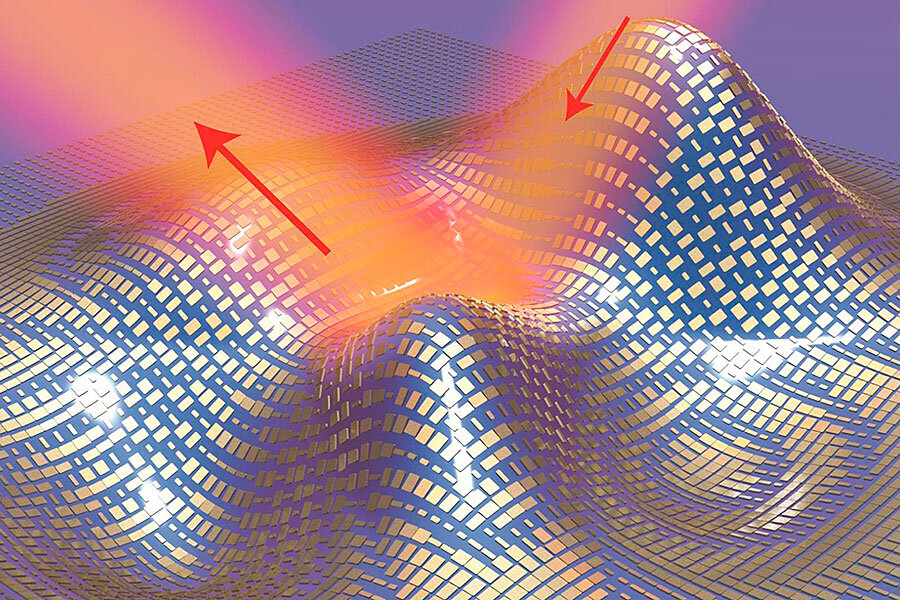One step closer to 'Harry Potter': Tiny invisibility cloak developed
Loading...
Science fiction is where many people first encountered rockets to space, missions to Mars, or genetic engineering, all of which are realities today, but a scientific development announced Friday sounds more like the stuff of fantasy.
Researchers at the University of California-Berkeley are trying to develop an invisibility cloak, a fabric that can be worn to make something unrecognizable, one of the famous magical artifacts of fictional wizard Harry Potter. Right now, the "cloak" is tiny – the size of a few biological cells, the Los Angeles Times reports – but the existence of the small sample proves that a human-sized cloak could one day be possible.
The idea of invisibility has long interested humans, and Harry Potter's magical cloak is inspired by that, said Xiang Zhang, a materials scientist at Lawrence Berkeley National Laboratory and coauthor of the study.
"Our research is naturally arisen from more the basic science question, 'How we can get the light around?'" Dr. Zhang told The Christian Science Monitor.
Researchers may not intend the fabric for use in defeating dark wizards, but the technology may have applications in defense.
At this point, the material is more like a camouflage. Although it could be designed to cover a person, each cloak would require an individualized design against a set background in order to function. In that sense, it might be more like the urban camouflage developed by Sherlock Holmes in "Sherlock Holmes: Game of Shadows" than the boy wizard's favorite fashion accessory.
"This cloak may work with your face, but it doesn’t work with my face because our facial features are very different," Dr. Zhang told the Times.
Previous efforts at invisibility cloaks could only cover regular geometric shapes, without bumps, and required a lot of fabric. The new fabric does bring researchers closer to true invisibility than before because there is no phase shift to make the object detectable, notes the study published Friday in the journal Science.
Researchers believe a cloak could eventually be made for a person, perhaps as an enhanced camouflage for soldiers in the field, or as a fashion accessory that hides pimples on the nose or an unfortunate belly, according to Reuters.
Don't expect to find an invisibility cloak on clothing racks anytime soon, however. Zhang told Reuters the fabric itself will take five years to a decade for them to develop. The fabric is actually similar to tiny gold bricks of man-made meta-materials.
"The light reflected off the surface of the skin cloak was identical to light reflected off a flat mirror, making the object underneath it invisible," according to a Berkeley Lab news release.
Art and science have long been known to impact each other in the form of literature and and films that imagine or react to scientific developments. In 2014, NASA made a list of discoveries from the 1968 film "2001: A Space Odyssey" that are now a reality, including the International Space Station, flat-screen computer monitors, and exercise in orbit.








